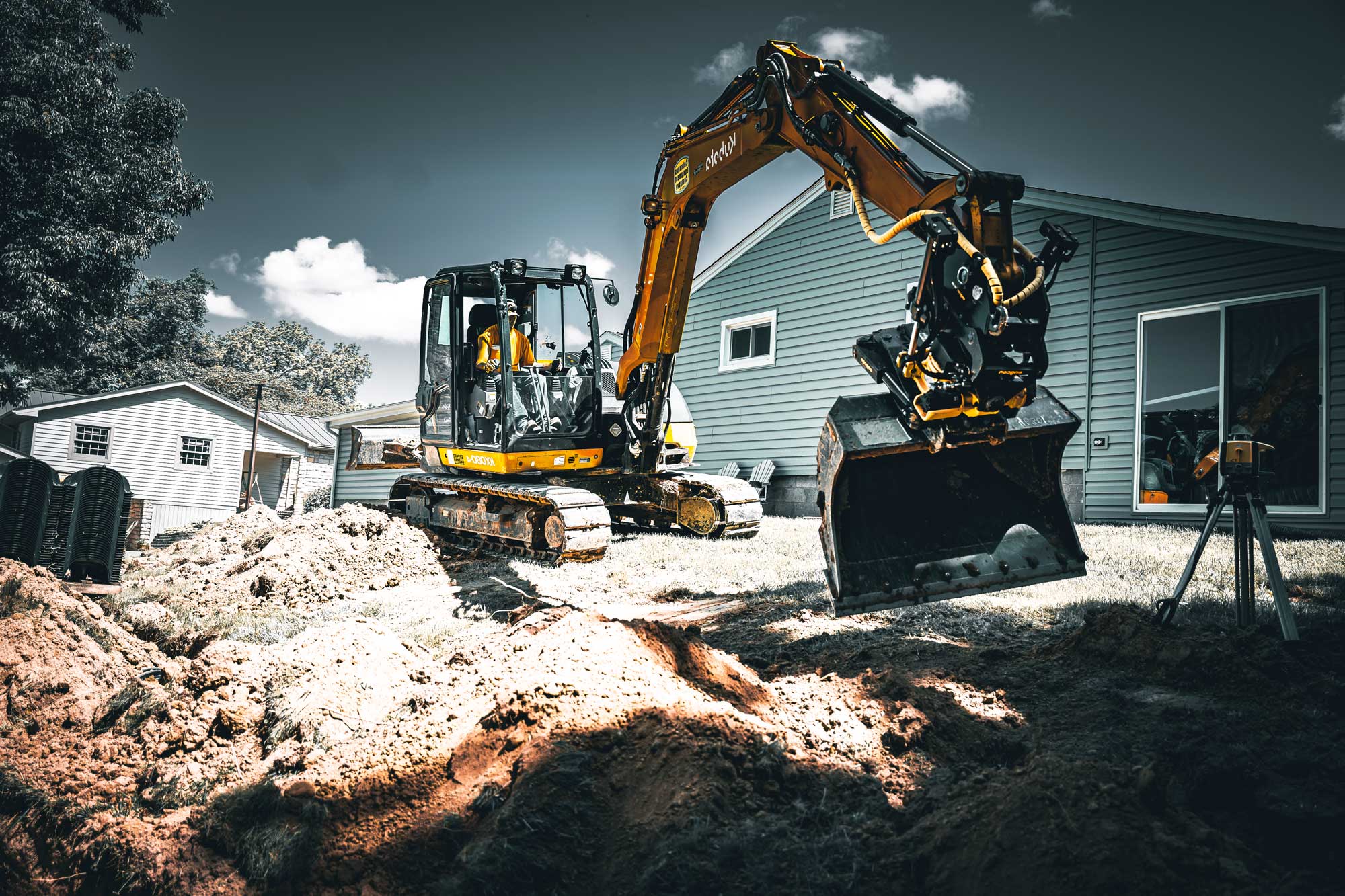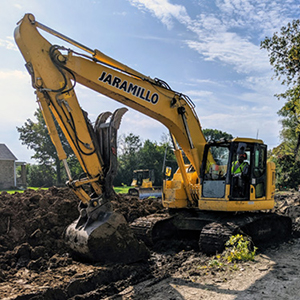Unveiling the Art of Excavation: Pro Tips for Safe and Efficient Digging
In the realm of excavation, the mastery of effective and safe excavating is an art form that calls for adherence, accuracy, and understanding to established practices. As dirt is transformed and planet is relocated, the details of excavation reveal themselves, requiring an eager understanding of tools, soil structure, safety protocols, and environmental considerations. The know-how required to browse these aspects properly can indicate the difference in between an effective excavation job and a potential disaster. By deciphering the layers of this elaborate process, a world of understandings and methods waits for those looking for to boost their excavation skills to new elevations.
Significance of Correct Devices
To make certain the safety and efficiency of any kind of excavation project, making use of the suitable equipment is vital. The right devices not just boost efficiency but also mitigate dangers connected with excavating. Excavation projects vary in range and complexity, ranging from little domestic landscaping tasks to massive building and construction undertakings. No matter the job dimension, having the appropriate devices can make a considerable distinction in the outcome.
These versatile machines come in various sizes to fit various job needs. Small excavators are ideal for smaller sized jobs, while larger excavators deal with extra extensive tasks effectively.
Excavators excel in tasks that call for pressing big quantities of dirt or particles. By spending in the proper tools, excavation jobs can be completed safely, on time, and with precision.
Understanding Dirt Structure
An extensive understanding of dirt composition is essential for executing excavation jobs with accuracy and safety and security. Recognizing the various sorts of dirt is critical as it directly impacts excavation approaches, tools selection, and total project performance. Soil make-up usually includes 4 major components: sand, silt, clay, and raw material. Each part has one-of-a-kind buildings that influence exactly how soil reacts to excavation procedures.
Sand fragments are the largest and provide good drain yet supply little cohesion. Silt fragments are smaller than sand yet bigger than clay, using modest drainage and cohesion. Clay bits are the smallest and provide high communication but inadequate water drainage. Raw material, such as rotting plant material, affects soil fertility and stability.
Prior to commencing excavation, carrying out dirt examinations to establish its make-up and qualities is essential. This info assists in selecting the appropriate tools, carrying out precaution, and developing excavation approaches tailored to the certain soil problems - lancaster excavation. By recognizing soil structure, excavation experts can improve project end results while guaranteeing security and adherence to ideal methods
Safety And Security Actions and Protocols
Comprehending soil composition is the keystone upon which precaution and protocols for excavation jobs are built, making certain the health of employees and the success of the endeavor. When it comes to safety and security during excavation, there are numerous crucial steps that should be implemented to reduce threats and protect against crashes.
Most importantly, prior to any type of digging starts, a thorough inspection of the site must be performed to recognize any type of possible dangers such as underground energies, unpredictable dirt conditions, or neighboring frameworks that could posture a danger. It is crucial to have a skilled individual oversee the excavation procedure to guarantee that all security protocols are followed purely.
Additionally, all workers entailed in the excavation must be effectively educated in secure excavating methods and the correct operation of equipment. By adhering to these safety steps and procedures, excavation projects can be completed effectively and without case.
Reliable Excavation Preparation
When getting started on an excavation project, thorough preparation is important to make sure performance, safety, and successful end results. Reliable excavation preparation involves numerous vital actions that are important for the smooth execution of the job. The initial step is to carry out a thorough website analysis to recognize any potential hazards, such as below ground energies or unstable dirt problems. This details is crucial for creating a thorough excavation strategy that consists of precaution and risk mitigation techniques.
As soon as the website analysis is total, the next step is to develop a clear timeline and schedule for the excavation tasks. This includes figuring out the sequence of jobs, equipment demands, and manpower appropriation. Proper scheduling aids prevent delays and guarantees that the project stays on track.

Moreover, communication amongst all staff member is extremely important throughout the planning phase. Clear instructions, normal updates, and like it effective sychronisation are crucial for a successful excavation task. By spending time and initiative in careful planning, excavation groups can substantially boost efficiency, reduce threats, and achieve effective end results.

Taking Care Of Ecological Factors To Consider
With boosting focus on environmental sustainability in construction techniques, handling ecological factors to consider has actually ended up being an essential facet of excavation tasks. Excavation tasks have the prospective to affect the surrounding setting via soil disintegration, debris runoff, habitat disturbance, and contamination of water sources. To minimize these risks, it is vital to apply best methods that prioritize environmental management.
Additionally, appropriate waste management is vital to avoid dirt and water contamination. Executing procedures for the disposal of hazardous products, recycling of waste materials, and decreasing using unsafe chemicals can significantly reduce the environmental effect of excavation tasks. By incorporating these methods into excavation planning and execution, construction firms can make certain that their jobs are not only risk-free and effective yet also environmentally responsible.
Verdict
Finally, mastering the art of excavation calls for a thorough understanding of appropriate tools, dirt make-up, precaution, and efficient preparation. By adhering to these standards and taking into consideration ecological elements, excavations can be carried out securely and efficiently. It is essential to focus on security and efficiency in every digging project to guarantee effective outcomes.
As dirt is turned and earth is relocated, the intricacies of excavation disclose themselves, requiring an eager understanding of tools, soil make-up, safety and security methods, and ecological factors to consider.To ensure the security and efficiency of any excavation task, using the proper tools is critical.A thorough understanding this of dirt composition is essential for executing excavation projects with accuracy and safety and security. Understanding the various kinds of dirt is vital as it see page directly affects excavation methods, equipment selection, and total job performance. By understanding soil composition, excavation specialists can boost project results while making certain safety and security and adherence to ideal methods.